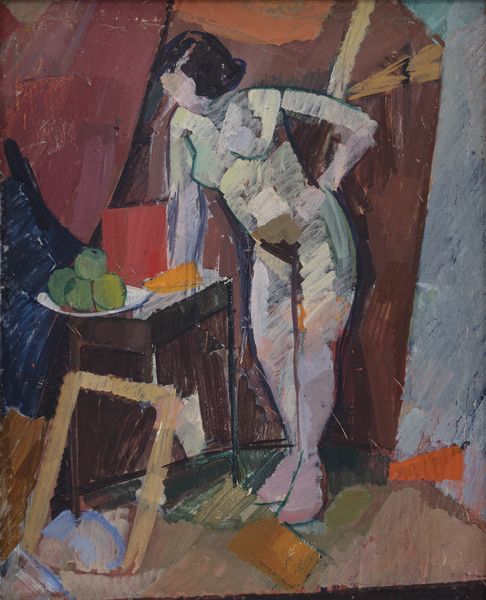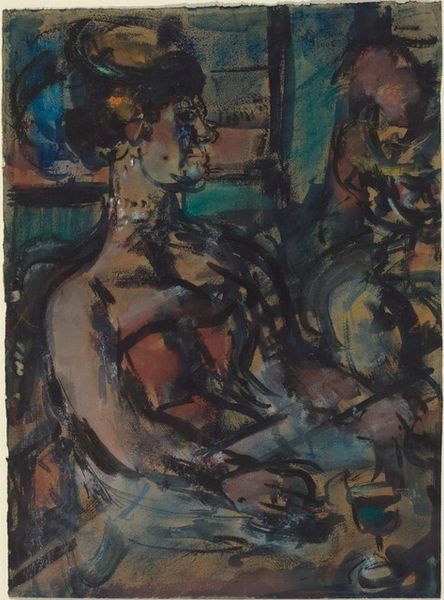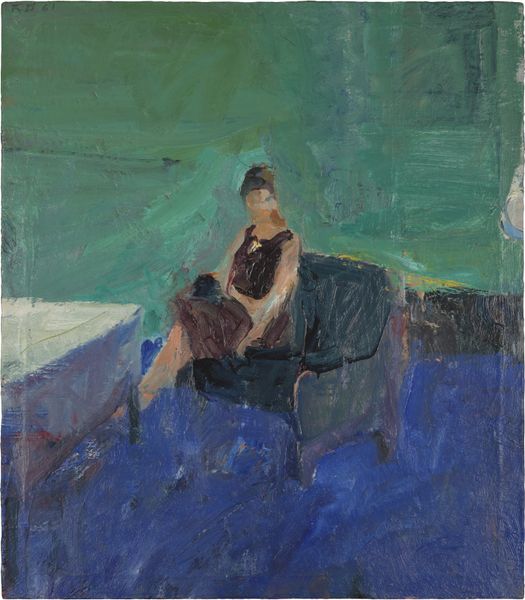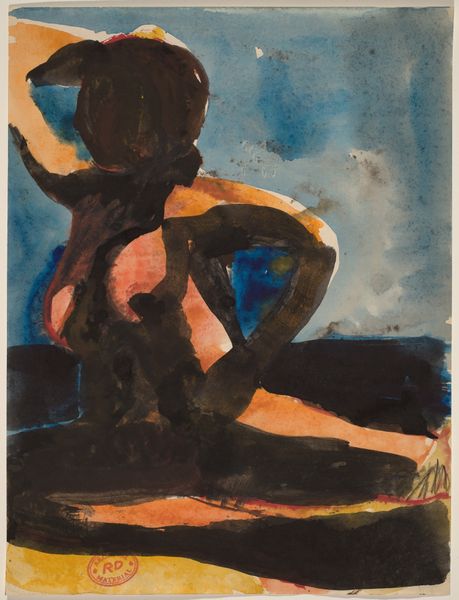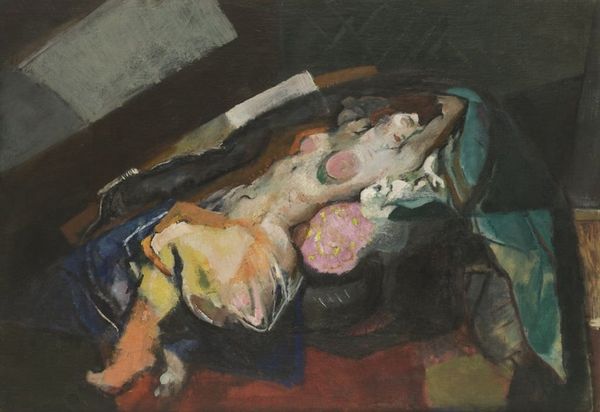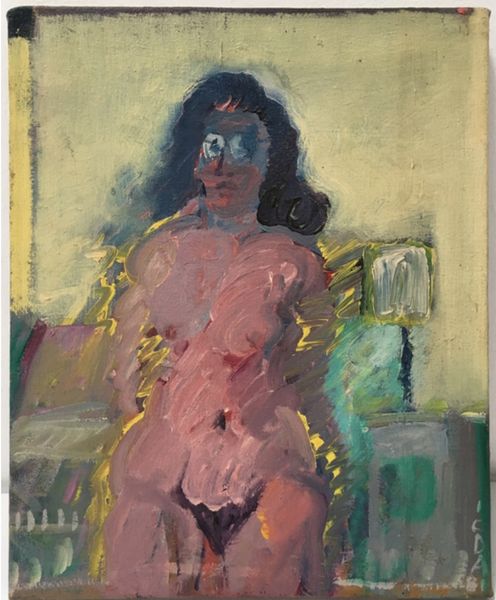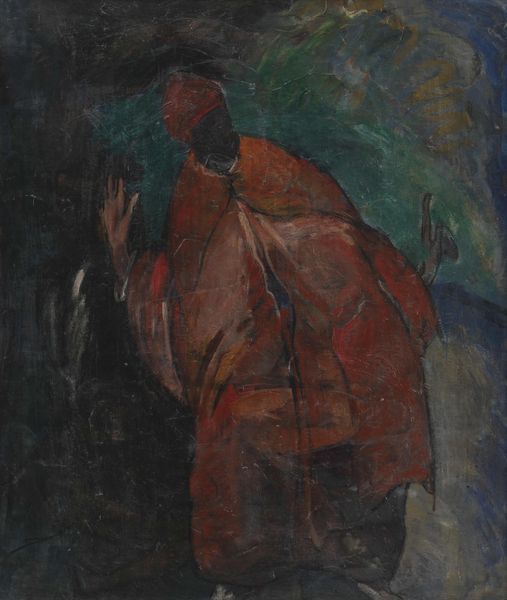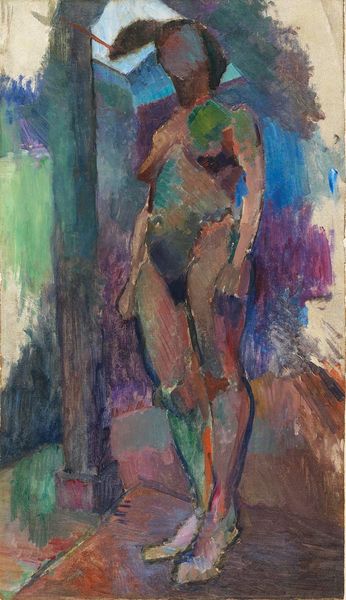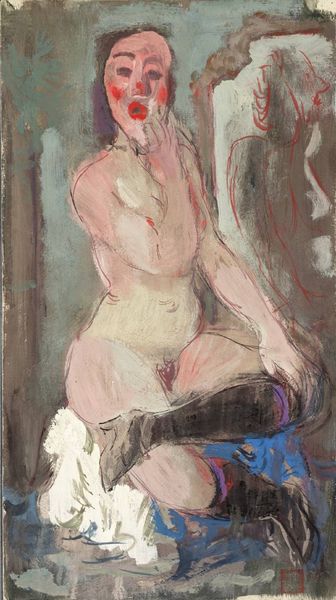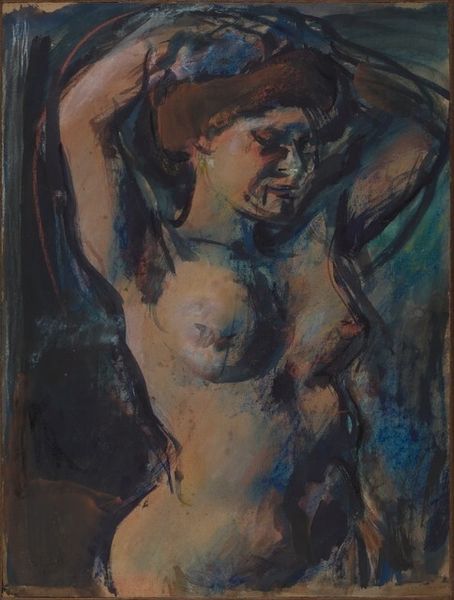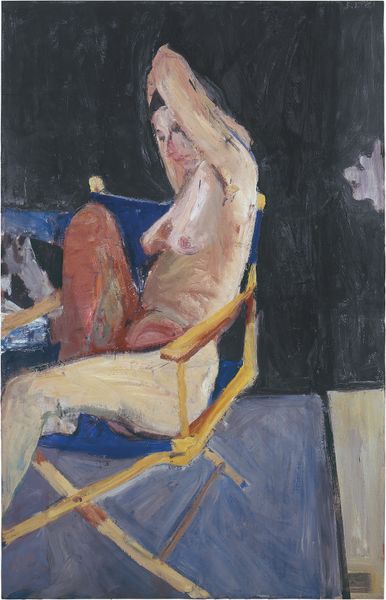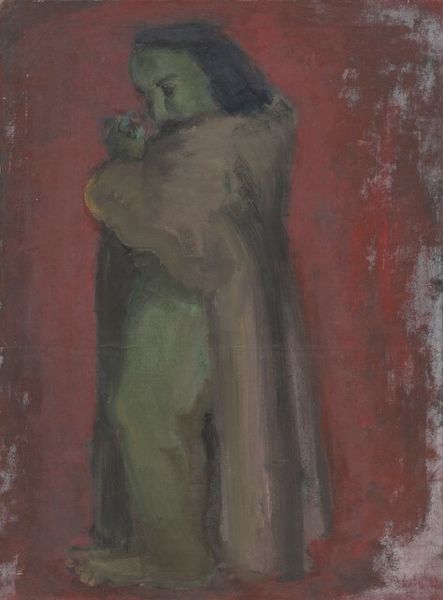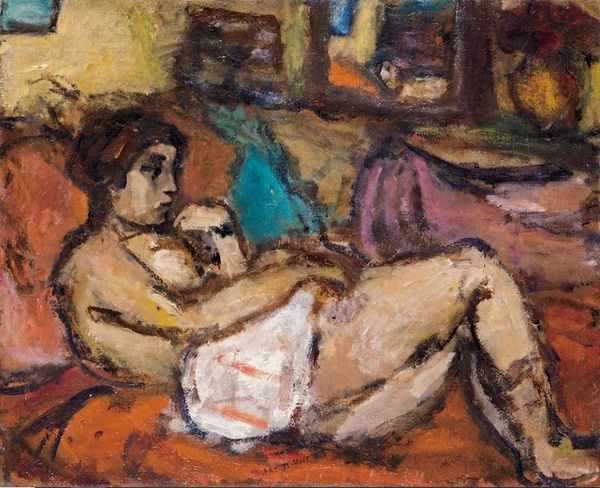
painting, oil-paint, impasto
#
portrait
#
figurative
#
fauvism
#
painting
#
oil-paint
#
figuration
#
oil painting
#
impasto
#
nude
#
modernism
Copyright: Modern Artists: Artvee
Curator: Standing before us is "Nu aux souliers roses," or "Nude with Pink Shoes," by Henri Matisse. Editor: It's surprisingly somber, isn't it? Not what I typically associate with Matisse's exuberant color. The dark, almost muddied tones are so unlike his later works. Curator: Indeed. While the specific date is unknown, placing this within Matisse’s broader trajectory is key. His work evolved dramatically, yet often circled back to questions of form, color, and the representation of the female body in Modernism. What readings can we get from the muted tones and heavy lines? Editor: To me, the somber colors suggest a confrontation with the realities of representation. We see a challenge to traditional beauty standards. There's an awkwardness, an honesty. Are the shoes meant to satirize idealized feminine depictions? Is he engaging with earlier artistic trends such as symbolism that dealt with these topics? Curator: That’s a sharp insight. Fauvism, the movement Matisse helped pioneer, aimed to liberate color, but also challenged academic traditions. Depicting the figure with such frankness certainly contributes to this questioning of traditional artistic structures and power dynamics. This adds another layer to this nude. Where do we locate it between expression and objectification? Editor: Exactly. And thinking about art institutions, this painting makes me wonder about its early reception. Did the art world receive this departure from traditional nudes well, or did it cause shock? How did socio-political ideas shape interpretations of the piece? The colors have the quality of bruises and heavy shadows – what cultural messages are being passed on? Curator: That’s crucial to consider. Works like these are never produced nor consumed in a vacuum. Taking note of our modern gaze reflecting on this image opens a multitude of entry points when deciphering it, considering how our values shape the narrative. What can be more useful than recognizing how aesthetics and ideologies intertwine. Editor: Absolutely. It reinforces that art history is never just about aesthetics; it’s deeply entangled with identity, power, and societal values. This image offers space for interpretation, which to me is part of what gives this its compelling quality. Curator: And it showcases, yet again, how Matisse’s artistic quest pushes us to question pre-conceived concepts about art.
Comments
No comments
Be the first to comment and join the conversation on the ultimate creative platform.
